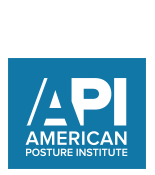
Maximize Your Brain Power With Brain Based Ergonomics
For many years the field of ergonomics has focused on the physical aspect of ergonomic design to improve posture and the function of the body while at work. Although this concept is of utmost importance for improved posture, it did not consider the neurology controlling the Posture System.
With the implementation of Cognitive Ergonomics and Neuroergonomics, a new paradigm of ergonomic design has emerged.
With the implementation of Cognitive Ergonomics and Neuroergonomics, a new paradigm of ergonomic design has emerged. This paradigm highlights the importance of brain function at work and how to maximize your brain power.
Cognitive Ergonomics
Cognitive ergonomics, defined by the International Ergonomics Association “is concerned with mental processes, such as
perception, memory, reasoning, and motor response, as they affect interactions among humans and other elements of a system” (2016). With human-system interactions cognitive ergonomics focuses on cognitive functions and their associated psychological or behavioral component.
With regard to this field of ergonomics, cognition refers to the mental processes that are involved in processing and handling information and transforming information in the human mind and brain. It is relevant for companies to understand the specific job tasks that their employees must perform cognitively and ensure that their environment is suitable for these tasks.
For example, being a screen writer requires a high level of cognition and creativity. To perform well, this person needs to be in a location that ensures their ability to pay attention, concentrate, and perceive their senses in a way that is not distracting while they are writing a blockbuster script. How the brain perceives the amount of light, the sounds, and smells in the room will all have an impact on the writer’s ability to create work.
Neuroergonomics
The next specialization of ergonomics evolved from a need to understand brain function during the process of work. This field is called Neuroergonomics, it is dedicated to providing workers with an environment that promotes optimal brain function.
Neuroergonomics, as defined by Parsuraman and Rizzo (2008) “ is the study of the brain and behavior at work.” Neuroergonomics is the application of tools and knowledge of neuroscience, the study of brain function, to ergonomics and human factors engineering. Human factors engineering is the study of how to match technology with the capabilities and limitations of people so they can work effectively and safely.
The goal of merging neuroscience with ergonomics into what is now known as Neuroergonomics, is to design human centered systems that improve safety and efficiency while optimizing neural mechanisms for sustained human performance” (Dehais & Ayaz, 2016).
Neuroergonomists are designing technologies in the workplace and home to provide new training methods that expands brain functional capabilities and optimizes the relationship between people and technology (Parsuraman & Rizzo, 2008).

How to Maximize Brain Power
From a neuroergonomic perspective, the set up would integrate the following pieces to promote better brain function while at work.
- There would be physical work parameters to prevent physical fatigue. For example, the computer would signal when to take breaks based upon the circadian rhythm of the human body. Employees can set an alarm to signal high and low peak times to take work breaks in relation to their circadian rhythm.
- To stay alert and prevent mental fatigue, workers can schedule intermittent mindfulness or meditation sessions throughout the day. The utilization of specialized apps help patients get into a meditative state, even during a break at work for just ten minutes or so. Mindfulness breaks reset brain waves so that when the patient returns to work they are more alert and can prevent mental fatigue and burnout.
- Always resist the urge to multi-task. In the technologic era people are controlled by their “dinging” notifications. The best way to keep your brain in a productive state is to turn off Facebook and email notifications. If those come across your screen and are accompanied by a “ding” sound, your eyes saccade to the notification and your concentration is momentarily lost. When you do this repeatedly you train your brain to respond to notifications, losing concentration hundreds of times per day.
These neuroergonomic considerations in conjunction with proper postural biomechanics are a recipe for success! Optimizing the neurology controlling the Posture System is your key to optimized brain power with high performing posture.
The field of ergonomics is progressing and advancing forward. Neuroergonomics is the new paradigm shift to sweep the ergonomic industry and make an important impact on the lives of workers worldwide.
>> Access The Virtual Ergonomics Summit at 85% Off Today! <<
References:
Dehais, F. & Ayaz, H. (2016) The Brain at Work and In Everyday Life, AXA Research, The Brain at Work and In Everyday Life International Conference, Paris, France, 2016.
International Ergonomics Association (2016) Definition and Domains of Ergonomcis. Retrieved from http://www.iea.cc/whats/index.html.
Parasuraman, R. & Rizzo, M. (2008) Neuroergonomics: The Brain at Work. Volume 3 of Human-Technology Interaction Series. Oxford University Press, 2008.



















